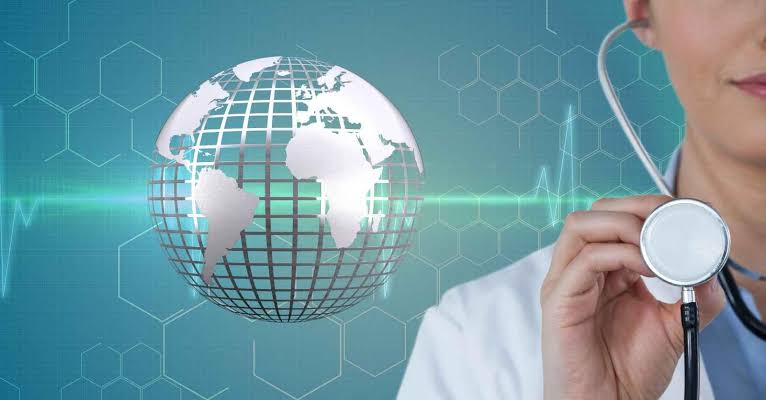Global health crises have always tested the strength of societies, economies, and healthcare systems. From pandemics and outbreaks to chronic diseases and security threats, these problems need quick, new, and joint actions. In recent years, especially after COVID-19, technology has changed how the world gets ready for and deals with these challenges. By July 2025, digital tools, artificial intelligence, biotechnology, and advanced data systems are key parts of global health plans. These technologies are not just helpers; they are basic in finding, handling, and beating health threats worldwide.
Early Detection and Surveillance Systems
One of the most critical aspects of managing health crises is early detection. Modern technologies have significantly improved the ability to monitor potential outbreaks before they become uncontrollable. Artificial intelligence and machine learning are now used to scan digital health records, social media chatter, and global travel data to detect patterns that may indicate the emergence of a new disease.
Global platforms such as WHO’s Epidemic Intelligence from Open Sources (EIOS) and similar AI-driven surveillance tools are able to flag unusual health trends in real time. In 2025, enhanced integration of satellite data and geolocation services has also enabled the detection of zoonotic disease activity in remote areas, offering a proactive approach to disease prevention rather than reactive containment.
Digital Health Records and Telemedicine
Digital health records (EHRs) are becoming increasingly standardized and interconnected across borders. This advancement allows for rapid sharing of patient information between hospitals, regions, and countries during emergencies. In times of health crises, having access to accurate, up-to-date medical records can significantly improve triage, reduce duplicate testing, and enable continuity of care.
Moreover, telemedicine has revolutionized access to healthcare, particularly in underserved or quarantined areas. Through video consultations, remote monitoring devices, and mobile health apps, doctors can diagnose and manage patients from afar. In 2025, telemedicine has matured into a critical infrastructure tool for delivering primary care, mental health support, and even complex diagnostics, minimizing the burden on hospitals and reducing the spread of infectious diseases.
Vaccine Development and Distribution
The rapid development of COVID-19 vaccines demonstrated how technology could accelerate biomedical innovation. Today, mRNA platforms, genome sequencing, and AI-assisted drug discovery are not just theoretical concepts—they are active instruments in the fight against emerging diseases.
As of July 2025, many global pharmaceutical companies are using cloud-based research networks and AI simulations to model virus behavior and identify potential vaccine candidates in a matter of weeks. Furthermore, blockchain technology is being used to ensure transparency and traceability in vaccine distribution chains, helping to prevent fraud, misallocation, and counterfeiting in low-income and high-demand regions.
Health Education and Public Awareness
Misinformation can spread just as rapidly as disease, often undermining public health efforts. Digital platforms such as mobile apps, chatbots, and AI-driven news aggregators are now essential in disseminating accurate, real-time health information. These tools help educate the public on symptoms, prevention techniques, vaccine benefits, and government regulations.
In 2025, several international NGOs and national health authorities are using social media algorithms to identify misinformation trends and intervene with verified content. Interactive platforms and virtual reality tools are also used to teach basic hygiene, emergency preparedness, and health literacy in schools and community centers, especially in rural or low-resource environments.
AI and Predictive Modeling
Artificial intelligence has become one of the most powerful tools in the fight against global health crises. AI systems analyze vast datasets to predict where a disease might spread, how it may mutate, and which demographics are most at risk. This modeling enables governments and health agencies to allocate resources more effectively, implement targeted interventions, and avoid unnecessary disruptions.
In 2025, countries are increasingly relying on AI models for scenario planning during crises—whether related to pandemics, natural disasters, or bioterrorism. These models consider environmental, social, and economic variables, making them more accurate and context-specific than traditional statistical approaches.
Robotics and Automated Systems
To reduce human exposure to dangerous environments, robotics is now widely used in health crisis zones. Robots are employed to disinfect hospitals, deliver supplies in quarantined areas, and assist in sample collection and testing procedures. In some high-risk laboratories and treatment centers, robotic arms conduct testing of hazardous biological materials, ensuring both speed and safety.
Automated systems in logistics and supply chain management also help move critical resources—like PPE, oxygen tanks, and vaccines—across continents efficiently. Drones, for example, are being used to deliver medical kits to remote or war-torn regions, filling a crucial gap in crisis response.
Mental Health and Crisis Support
Global health crises extend beyond physical illness; they also take a psychological toll. Digital mental health platforms, including AI-driven chatbots, virtual therapy sessions, and community forums, offer scalable ways to provide emotional support. These tools are especially valuable in refugee camps, disaster zones, and post-crisis rehabilitation areas where traditional mental health services are limited.
In 2025, new wearable technologies also help track emotional well-being by monitoring stress indicators such as heart rate variability, sleep patterns, and cortisol levels. These real-time insights allow healthcare providers to intervene early and recommend personalized treatment or counseling options.
Challenges and Ethical Considerations
While technology offers unprecedented capabilities, its application in health crises is not without challenges. Issues such as data privacy, unequal access to digital tools, and algorithmic bias remain major concerns. In many low-income countries, technological infrastructure is still underdeveloped, leading to a digital divide in crisis response capabilities.
Ethical considerations around the use of surveillance technologies, especially those involving biometric tracking or AI-based decision-making, require constant vigilance. Policymakers and technologists must work together to ensure that solutions respect human rights while maximizing public health benefits.
Conclusion
The role of technology in addressing global health crises has evolved from a supplementary tool to a frontline defense. From early detection and data analysis to remote care, vaccine development, and mental health support, digital innovation now permeates every stage of crisis management. As the world continues to face complex health threats in 2025 and beyond, the integration of ethical, inclusive, and resilient technological solutions will be essential in building a healthier, more prepared global society.


